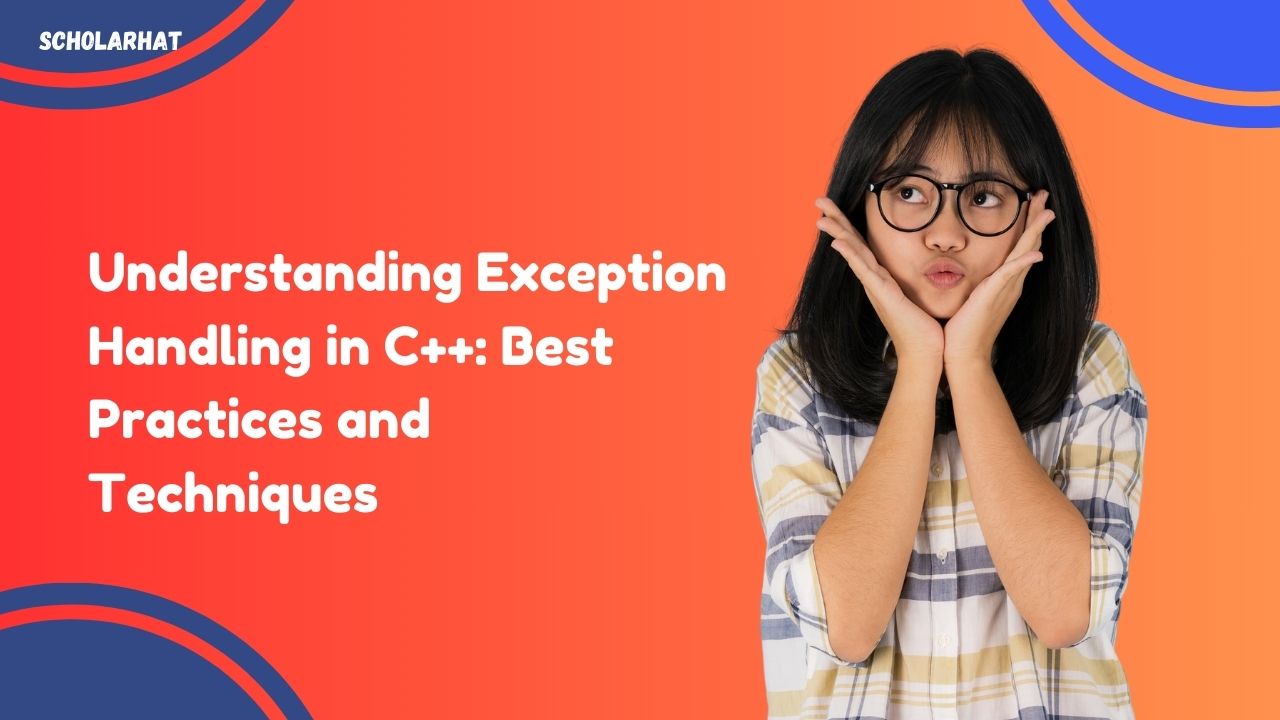Exception handling in C++ is a crucial aspect of writing robust, reliable software. It allows developers to manage unexpected conditions and errors in a program, ensuring that the program can handle such situations gracefully without crashing. This comprehensive guide explores the best practices and techniques of exception handling in C++, providing developers with the tools needed to effectively implement these strategies in their applications.
Basic Concepts of Exception Handling
Exception handling in C++ revolves around three key keywords: try, catch, and throw.
-
try blocks: Enclose code that may throw an exception.
-
catch handlers: Define how to respond to specific exceptions.
-
throw statement: Used to signal the occurrence of an anomalous condition.
Example of Basic Exception Handling
#include <iostream>
int main() {
try {
throw std::runtime_error(“A problem occurred”);
}
catch (const std::runtime_error& e) {
std::cout << “Caught an exception: ” << e.what() << std::endl;
}
return 0;
}
This simple example demonstrates throwing and catching an exception, specifically a std::runtime_error, one of the standard exceptions provided by the C++ standard library.
Best Practices in Exception Handling
1. Use Exceptions for Exceptional Conditions
Exceptions should be reserved for truly exceptional, non-routine events that prevent the function from performing its intended purpose. This means you should not use exceptions for flow control or other conditions that could be handled using regular control structures like if or while.
2. Catch Exceptions by Reference
When catching exceptions, always catch them by reference, preferably as a const reference. Catching by value can cause slicing problems where derived class data is not accessible.
try {
// Code that might throw
}
catch (const std::exception& e) {
// Handle exception
}
3. Distinguish Between Recoverable and Unrecoverable Errors
Not all exceptions are created equal. Some represent recoverable errors, while others, such as out-of-memory errors, may not be realistically recoverable in a running application. Understand the nature of the exception in your specific context and handle it accordingly.
4. Provide Useful Error Messages
When throwing exceptions, include detailed error messages that provide clear insights into what went wrong. This practice is crucial for debugging and maintenance, making it easier to track down and resolve issues.
throw std::runtime_error(“Failed to open file: ” + filename);
5. Clean Up Resources Properly
Ensure that all resources (memory, file handles, network connections, etc.) are properly released even when an exception is thrown. This is best handled using Resource Acquisition Is Initialization (RAII) techniques, where resource management is tied to object lifetimes.
6. Propagate Exceptions Appropriately
When writing a function that cannot handle an exception meaningfully, let the exception propagate to a higher level where it can be handled properly. Use the throw; statement to rethrow a caught exception without handling it.
Techniques for Advanced Exception Handling
Nested Try-Catch Blocks
In complex applications, you might need nested try-catch blocks where an inner block handles specific errors while an outer block catches more general errors or performs cleanup.
Exception Specifications and noexcept
Historically, C++ allowed developers to specify exceptions that a function might throw using exception specifications. However, these have been deprecated in favor of noexcept, which indicates whether a function is guaranteed not to throw exceptions. Using noexcept can help the compiler optimize the code.
void example() noexcept {
// Code that does not throw
}
Standard Library Exceptions
Utilize the rich hierarchy of exception classes provided by the C++ standard library, such as std::logic_error, std::runtime_error, and their subclasses. These standard exceptions convey specific meanings and can be used to communicate detailed error information.
Conclusion
Effective exception handling in C++ is vital for developing robust software that can manage errors gracefully. By adhering to best practices, such as using exceptions only for exceptional conditions, catching exceptions by reference, and employing RAII for resource management, developers can enhance the reliability and maintainability of their applications. For further detailed guidance and examples on implementing these strategies, exploring resources on exception handling in C++ is highly recommended.




